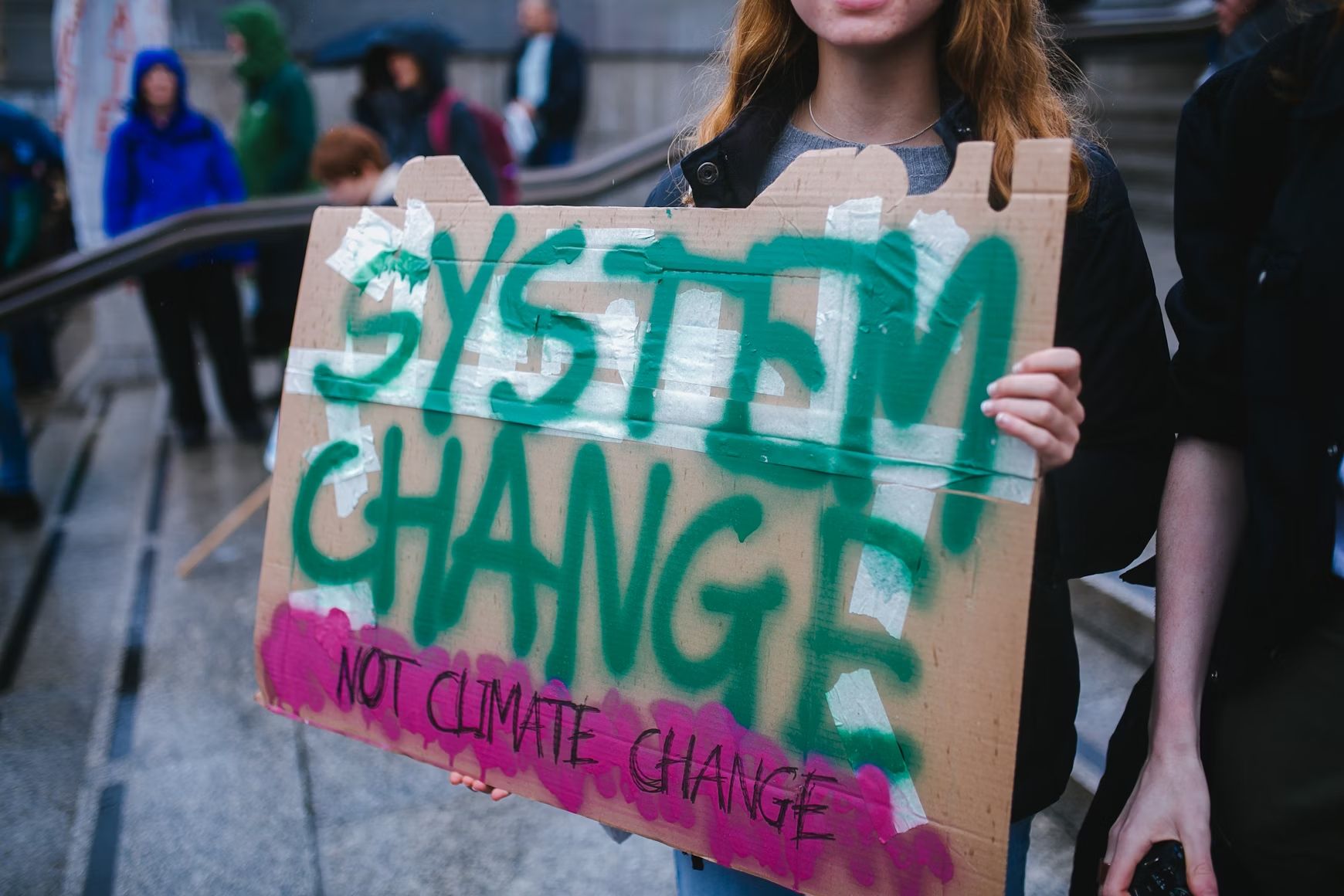The Green Claims Directive: Impact on companies and their marketing claims
The Green Claims Directive: Everything companies need to know about the impact on their marketing...
By: Johannes Fiegenbaum on 5/24/25 4:56 PM

Avoiding Greenwashing and Implementing True Sustainability: Companies often face the challenge of communicating their sustainability efforts credibly without falling into the greenwashing trap. Greenwashing means making environmental claims that are misleading or unsubstantiated. This can destroy trust and result in legal consequences. How to Avoid the Trap of Greenwashing Marketing According to a 2022 report by the European Commission, over 42% of green claims made by companies in the EU were exaggerated, false, or deceptive, underscoring the widespread nature of greenwashing and the need for vigilance. Source
In 2020, Ryanair called itself Europe’s most environmentally friendly airline—the result: lawsuits, loss of trust, and a PR disaster. This example shows: those who engage in greenwashing lose more than just their reputation. The airline’s claims were found to be misleading by the UK Advertising Standards Authority, which banned the ads and highlighted the importance of substantiating environmental statements. Source
| Step | Description |
|---|---|
| Set goals | Analyze the status quo and formulate clear, measurable objectives. |
| Plan actions | Create a detailed plan with responsibilities and milestones. |
| Develop KPIs | Use KPIs such as CO₂ emissions, energy consumption, or diversity. |
| External audit | Have sustainability data verified by independent bodies. |
| Reporting | Communicate progress regularly and transparently. |
Greenwashing not only damages credibility, but also the financial stability of a company. According to a 2023 survey by McKinsey, 66% of consumers are willing to pay more for sustainable brands, but only if they trust the claims. Source With a clear strategy, solid data, and regular reviews, companies can build long-term trust and drive real change. Implementing ESG Criteria: A Beginner's Guide to Sustainability
A clear theory of change connects actions with measurable results and provides a solid foundation for ESG initiatives that are both credible and actionable. The Science Based Targets initiative (SBTi), for example, helps companies align their climate goals with the latest climate science, ensuring that actions lead to measurable results. Source
To develop an impactful theory of change, a structured approach is crucial:
Example: A textile company wants to reduce its CO₂ emissions. The action: switching to recycled materials. The assumption: recycled materials cause 30% fewer emissions. The goal: reduce CO₂ by 100 tons per year. Externally validated by LCA. Life Cycle Assessment (LCA)
Regular reviews are essential to ensure goals are met. Tools like the SDG Impact Assessment Tool help systematically evaluate progress toward the UN Sustainable Development Goals. According to the World Business Council for Sustainable Development, companies that conduct annual sustainability reviews are 30% more likely to achieve their targets. Source
Key steps for verification:
This approach ensures your sustainability strategies are built on a solid foundation and achieve real progress. Tools and frameworks such as the GRI Standards or the SDG Impact Assessment Tool offer valuable support.
To avoid greenwashing, clear actions and a well-founded approach are essential. The goal is to design sustainability initiatives credibly and transparently, supported by systematic audits and reliable data. A Harvard Business Review analysis found that companies with robust internal controls and transparent reporting are less likely to be accused of greenwashing. Source
A solid control system is the first step to ensuring credible sustainability statements. This includes:
With these internal structures, deviations can be identified and avoided early on.
Automated data collection and analysis are central tools for tracking sustainability goals and preventing negative developments. Companies should:
"According to the rationale of the CSRD EU directive, customers, suppliers, employees, investors, lenders, and other business partners of companies should use the information in particular to adjust business relationships. Politics and civil society should also be able to demand more targeted accountability from companies."
In addition to data-driven approaches, it is important to comply with legal frameworks.
Compliance with legal requirements is essential in Germany and the EU. The most important regulations include:
By combining these measures, companies can ensure their sustainability strategies are credible, verifiable, and successful in the long term.
Clear ESG statements strengthen trust in a company. To be credible, they should be precise, measurable, and supported by data. The Task Force on Climate-related Financial Disclosures (TCFD) recommends that companies disclose climate-related risks and opportunities in a standardized, data-driven way to enhance transparency. Source
Principles for effective ESG communication:
"To communicate authentically about sustainability initiatives, organizations should describe their efforts in concrete terms, back up their statements with data, and report transparently on both successes and failures." – Jasper Steinhausen
An example from practice: Ryanair falsely claimed to be climate-friendly in 2020, leading to significant credibility issues.
What is an ESG KPI for investors is often a cultural issue for employees. Credible communication must address both perspectives.
Many companies rely on elaborate ESG reports or high-profile campaigns—but without substance, these quickly come across as untrustworthy. Typical pitfalls:
A credible ESG approach does not require a perfect record—but does require openness, verifiable actions, and a willingness to continuously improve.
Sustainability reports require structured approaches and suitable tools. From 2024, the CSRD directive will increasingly require companies to disclose their sustainability performance. The Global Reporting Initiative (GRI) and the Sustainability Accounting Standards Board (SASB) provide widely recognized frameworks for reporting. GRI Standards SASB
Key components of a well-structured sustainability report:
| Component | Requirement | Implementation |
|---|---|---|
| Data collection | Environmental, social, and governance KPIs | Automated systems for continuous measurement |
| Format | Machine-readable in European Single Electronic Format (ESEF) | Use of formats such as XHTML |
| Verification | External audit of disclosures | Collaboration with independent auditors |
| Visualization | Clear presentation of data | Use of graphics, charts, and tables |
A successful example is provided by The Body Shop with its “Enrich, Not Exploit” campaign. The company clearly describes its goals, challenges, measures implemented, and current progress. Source
For compelling sustainability communication, companies should focus on information and education rather than just advertising. The key is to actively involve stakeholders and strike a balance between transparency and clarity.
The approaches presented make it clear: transparency, clear metrics, and external verification are crucial. Only consistent, data-driven action can build trust in sustainability communication. According to Edelman’s 2023 Trust Barometer, 88% of institutional investors say that companies that are transparent about their ESG progress are more likely to earn their trust. Source
Three core pillars form the foundation for long-term success:
| Pillar | Requirement | Practical Implementation |
|---|---|---|
| Transparency | Disclosure of successes and challenges | Regular publication of progress reports |
| Measurability | Concrete goals and KPIs | Implementation of monitoring systems |
| Verification | External validation | Collaboration with independent auditors |
These three building blocks create the framework for actionable and verifiable measures. A prime example of credible commitment is provided by Patagonia with its guiding principle:
"Build the best product, cause no unnecessary harm, use business to inspire and implement solutions to the environmental crisis"
Key implementation aspects:
Experience shows: companies that underpin their sustainability goals with concrete actions and regularly report on progress gain the trust of their stakeholders. Measures must be strategically planned, supported by measurable evidence, externally audited, and continuously updated.
As already explained, clear figures, external audits, and open communication build trust. Only those who regularly review and further develop their strategy remain credible. These adjustments show that commitment is more than just a declaration of intent.
These principles are the starting point for further discussion and a sustainable dialogue.
Here you’ll find answers to frequently asked questions that help avoid greenwashing and promote sustainable communication.
Greenwashing refers to misleading or insufficiently substantiated environmental claims. Common characteristics include:
| Characteristic | Example | Solution |
|---|---|---|
| Vague wording | General statements without numbers or facts | Formulate clear and measurable statements |
| Lack of evidence | Environmental benefits without proof | Use certificates from independent bodies |
| Misleading images | Nature images for environmentally harmful products | Honest and realistic representations |
| Incomplete information | Omitting negative aspects | Disclose all relevant information |
There are three basic steps for verification:
These measures build trust and contribute to credibility. For more on best practices in verification, see ISO 14001 Environmental Management.
A convincing Theory of Change is based on these three principles:
| Principle | Description | Example |
|---|---|---|
| Measurability | Clear KPIs and targets | Reduction of CO₂ emissions in tons per year |
| Causality | Logical link between actions and goals | Actions that directly contribute to defined objectives |
| Verifiability | Transparent evaluation methods | Regular external audits |
These principles support transparent and comprehensible communication of actions. For a practical guide, see Theory of Change.
Key Legal Requirements:
Practical Implementation Tips:

ESG & sustainability consultant specializing in CSRD, VSME, and climate risk analysis. 300+ projects for companies like Commerzbank, UBS, and Allianz.
More aboutThe Green Claims Directive: Everything companies need to know about the impact on their marketing...
Learn how to avoid greenwashing in marketing by making accurate and transparent sustainability...
This guide highlights two key Life Cycle Assessment (LCA) tools: the EU’s Product Environmental...